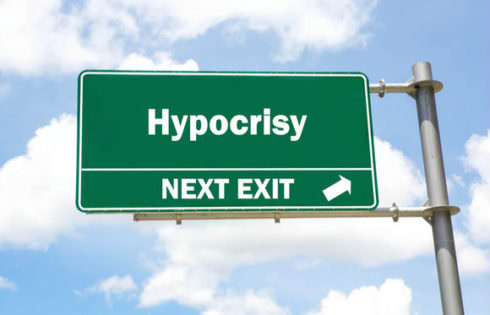
Jordan Weissmann of The Atlantic made his best attempt to argue in support of racial preferences in college admissions in a recent article.
As he explained, top colleges “have always been pretty pasty white places.”
Weissmann’s solution for this problem, as you might have guessed, has nothing to do with fixing the educational problems among ethnic minority groups who may be struggling today. Instead, he simply wants more race-based affirmative action.
In other words, he favors reverse discrimination.
Of course, there is one minority group that Weissmann takes pains not to bring attention to as he lays out his argument–Asians.
In a footnote at the bottom of his article he quickly explains why he left Asian students out of his main article: “For the sake of readability, and because I think the most important contrast here is between whites and economically disadvantaged minorities, I left the Asian population off the chart.”
How convenient for him. Much easier to make a wrong-headed argument when you leave out the one group that will suffer most under the policies you are advocating.
Weissmann left Asians off his chart because he didn’t want to point out the fact that giving racial preferences to Hispanics or Blacks means denying admission to qualified Asian students.
That’s the ugly side of racial preferences–and it’s a reality that Asian kids in this country confront every day.
For example, it is a documented fact that Asians face reverse discrimination in elite college admissions. Asians, on average, must score 140 points higher on the SAT exam in order to stand the same chance of admission as their non-Asian peers.
Weissmann wants to paint a simplistic picture of “whites vs. blacks” or “whites vs. Hispanics” because it’s easier to justify the reverse discrimination he’s advocating when doing so under the premise of protecting the “minority” from the “majority.”
On the other hand, when it turns out that members of one minority group–Asians–are harmed most by the racial quotas he wants to advance–the basic majority vs. minority premise of his argument breaks down.
Weissmann claims that ignoring Asians makes his charts “more readable,” but what it actually does is hide the truth.
In fact, we know that blacks and Hispanics are already the beneficiaries of unofficial quota systems at our nation’s elite colleges. How else does one explain the fact that Asians need much higher test scores are denied admission simply, it seems, because they happen to be Asian?
Who wants the job of explaining to that young Asian applicant out there that she doesn’t deserve admission to the school of her dreams, no matter how high her grades and SAT scores are, simply because she has the wrong skin color? Any volunteers?
When you judge applicants by their race rather than by their academic aptitude and preparedness–you get injustice. It’s inevitable.
Discrimination advocates like Weissmann never seem to be interested in actually solving the problems of educational underachievement at the high school and grade school level that exist in many black, Hispanic and other communities. Instead, they think our society can patch up the issue after the fact, simply by instituting racial preferences. It’s a lazy attempt to solve a very big problem.
There is an alternative approach to affirmative action that could achieve the same end without resorting to reverse discrimination. And that is to base it on class rather than race. Wealthy students do have many unfair advantages on the path to college admissions. As a result, poor students who are just as smart and talented sometimes can look a bit less qualified on paper. Test scores don’t tell us everything.
In reality, the achievement gap between the rich and the poor is about twice the gap that exists between blacks and whites. If one wants to take into account the disadvantages of the poor as a factor in college admissions–that would be a much more effective strategy for helping the disadvantaged.
Class-based affirmative action would be a way to level the playing field a bit, importantly, without resorting to race-based discrimination. Such “class-based affirmative action” would treat the poor of all races equally. Poor blacks, poor Hispanics, poor whites, poor Asians–they would all get a bit of a boost under such a system.
On the other hand, if you support racial preferences, then you are actually supporting racial discrimination. And that’s an odd way to promote “social justice,” don’t you think?
The solution to helping disadvantaged students lies in going beyond skin color. Instead, colleges should give a boost to the poor, regardless of race.
Weissmann does an injustice to the truth when he seeks to argue in favor of racial preferences in college admissions while intentionally omitting from his data charts the one minority group that is harmed most by racial preferences–Asians.
Unfortunately, like Weissmann, many advocates of race-based affirmative action think they can fix one legacy of racial discrimination by instituting another.
It won’t work. And, furthermore, it’s morally wrong.
Nathan Harden is editor of The College Fix and author of the book SEX & GOD AT YALE: Porn, Political Correctness, and a Good Education Gone Bad.
Like The College Fix on Facebook. / Follow Nathan on Twitter @NathanHarden
(Image: Kijkwijzer/WMC)






Please join the conversation about our stories on Facebook, Twitter, Instagram, Reddit, MeWe, Rumble, Gab, Minds and Gettr.